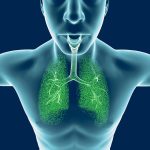Upper Airway Attacks Mostly Occur in Patients Ages 20-30, Smokers

Swelling attacks affecting the airway usually occur in hereditary angioedema patients between the ages of 20 and 30 — and are more frequent among smokers, a study shows.
However, the frequency of attacks was higher in people with acquired angioedema, a type of the chronic disorder in which the swellings take the form of large, smooth welts.
Overall, these findings highlight the need for early diagnosis — so as to ensure proper treatment — and for shunning potential triggers, such as smoking, according to researchers.
“Early diagnosis is key,” the researchers wrote. “Also it is essential to inform patients about the importance of avoiding the trigger factors and the early symptoms of [upper airway edemas], as these measures could significantly decrease the incidence of lethal [attacks].”
The study, “The characteristics of upper airway edema in hereditary and acquired angioedema with C1-inhibitor deficiency,” was published in the journal Clinical and Translational Allergy.
Angioedema is characterized by episodes of severe swelling, which mostly occur in the face, but also may affect other areas of the body, including the airways. This represents a potentially serious condition, as attacks may affect a patient’s ability to breathe.
There are several types of angioedema, characterized by their cause. In hereditary angioedema, or HAE, the condition arises due to genetic mutations. The most common form of HAE, called HAE type 1, is caused by mutations in the SERPING1 gene, which lower the production of a protein called C1 inhibitor or C1-INH that normally blocks the activity of other proteins that promote swelling.
However, other patients can have symptoms of angioedema while showing normal C1-INH activity levels. This can be caused by mutations in various genes, including coagulation factor XII, plasminogen, angiopoietin 1, and kininogen 1. It also can be of unknown origin.
Acquired angioedema, or AAE, is another form of the disease that also is caused by abnormally low levels of the C1-INH protein. However, in this specific form of angioedema, low protein levels are not the result of genetic mutations.
To learn more about these swelling attacks, and which individuals are most at risk, researchers in Hungary now conducted a retrospective analysis of patient medical histories. The team examined the medical records of 197 HAE patients with low C1‐INH levels — called the C1‐INH‐HAE group, and involving 109 women and 88 men — and 20 AAE patients, also with low C1‐INH levels. The AAE patients, known here as the C1‐INH‐AAE group, included 11 women and nine men.
All of the patients had been treated at the Hungarian Angioedema Center of Reference and Excellence between 1990 and 2020.
Three patients had HAE due to a mutation in the coagulation factor XII gene (two women, one man) and three others in the plasminogen gene (two men, one woman).
A total of 111 patients experienced attacks in the upper airways at least once, according to their medical history. Among these patients were 98 in the C1‐INH‐HAE group — 90 with type I HAE and eight with type II HAE — and 13 in the C1‐INH‐AAE group. In the AAE group, one patient had HAE due to mutations in the coagulation factor XII gene and another had a mutation in the plasminogen gene.
In the C1‐INH‐HAE group, the first swelling attack affecting the upper airways occurred when patients were a median of 22 years old. No differences in attack incidence were seen between men and women. Also, the majority of upper airway swellings occurred after HAE diagnosis (58 patients), although in 40 patients it preceded their diagnosis by a median of 11 years.
Upper airways attacks were the first manifestation of angioedema in only 10 of the 98 patients with C1‐INH‐HAE.
In 15 cases involving eight women and seven men, the attacks were caused by a dental procedure or an operation to the mouth or the pharynx, which is the part of the throat behind the mouth and nasal cavity. In one case, it was triggered after treatment with an angiotensin-converting enzyme inhibitor or ACEI, a class of medications commonly used to lower blood pressure.
In the C1‐INH‐HAE group, two patients died of suffocation after being diagnosed: a man at the age of 23 and a woman at the age of 37.
Genetic analysis of 195 patients revealed that 16.3% had a mutation in the SERPING1 gene and experienced upper airway attacks. Meanwhile, the gene was mutated in 9.3% of patients who did not experience such attacks.
Analysis of life habits, namely smoking, in 68 patients with C1‐INH‐HAE revealed that 44 of them were non-smokers, while 20 smoked regularly. Attacks affecting the airways were significantly more frequent among the smokers.
To get a more detailed view of attack rates throughout time, the researchers analyzed data gathered over the course of 10 years, which in total included 56 patients and 7,607 HAE attacks. Of these, 301 (4%) affected the airways.
Triggers for 61 of these attacks included stress and physical exhaustion (23 attacks), upper respiratory infections (16 attacks), mechanical traumas (11 attacks), and dental procedures (four attacks).
The incidence of airway attacks was higher among C1‐INH‐AAE patients (9.5%) compared with those with C1‐INH‐HAE (4%). Also, they spiked between the ages of 21 to 30 years.
Overall, this study highlights how an early diagnosis is key as a “patient must be provided with adequate treatment.”
“Without proper treatment, [such attacks] may lead to death by suffocation,” the researchers wrote in stressing the need for avoiding trigger factors.







